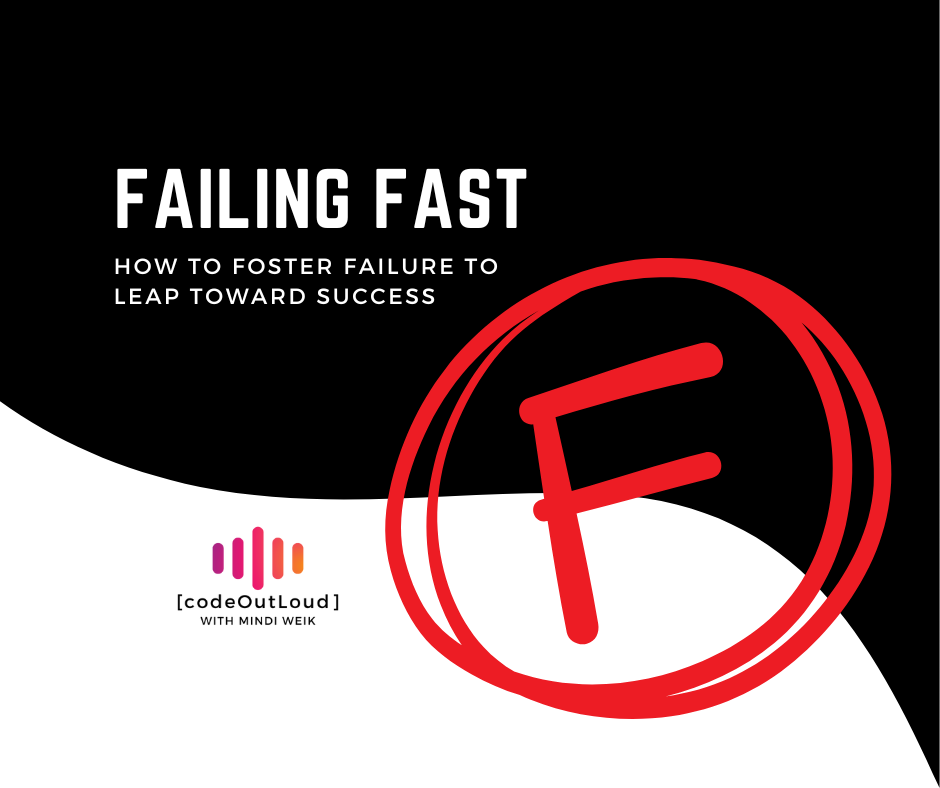Failing Fast
How to foster failure to leap toward success
Don’t have the time to read? Here’s the post - recorded by yours truly - to listen if you prefer!
Start with Failure - Speed Up Success
As I began my endeavor to learn more in public, it felt symbolic to start with failing fast. I first heard this when Dr. Emilyn Dale talked about this at a Women Impact Tech panel in Denver, CO, last year; it struck a chord for me. Little did I know I had already embraced it!
“Failing fast” as a term seems widely credited to author John C. Maxwell. The quote from his book Failing Forward:
Fail early, fail often, but always fail forward.
― John C. Maxwell
That said, this concept is a common Agile practice, better known as “iterations,” or attempts with adjustments. Experimentation and low-risk failures are encouraged for quicker, quality results.
This approach leads to incremental progress over time. It also encourages faster peer feedback and a higher standard of team output.
Although this process leads to innovation, failing fast doesn't work in every situation. The best is when experimentation is safe and warranted, like trying out a new idea or product.
If there is a potential for high costs or negative results you can’t easily reverse, it may not be best to try failing fast. In these cases, the costs could outweigh any benefits. Consider consequences before making a decision!
Failing fast as a practice was initially hard for me to adopt, but the value has been tremendous. Here are a couple of examples:
Before Software Engineering, I was an Onboarding Manager. I was tasked to automate our manual processes to allow us to tailor our customer experiences better. This was no easy feat.
It took multiple iterations to be smooth and efficient! Each adjustment got us closer to better performance. I admit I had unpleasant calls with customers when an unexpected automated email went out, for example, but the benefits were greater: we reduced launch time by 15 percent (appreciated by customers and our team) and improved customer satisfaction by 25 percent in under a year!Currently, my team is building a proxy service to decouple our platform from a third-party vendor to add a safety layer to the platform and allow us to accommodate adding a new vendor. It’s a greenfield project; we try approaches and pivot if we find a better solution.
Recently, we found an approach using a single endpoint over multiple endpoints with similar formats. After identifying this solution, we cut approximately 30% of this newer codebase, but the result is cleaner and easier for the platform to consume. It also appears more efficient; I haven’t tested it.
I recommend fostering a company culture of experimentation and innovation, but it doesn’t work for all businesses. As an individual contributor, embracing this concept when possible is good to help you make quick progress!

Ideas to try in your own projects or at work:
Focus on one concept at a time. Iterations should be small.
After you read about ideas or approaches, try them!
Have a project idea in mind? Mock it up in a simple way.
Document results; back up your decisions with data!
🤩 A great tip for cultures that don’t foster failure.
Consider if the experiment can be easily reversed.
🥸 If so, go for it! If not, think twice and be careful.
An important goal of the fail fast philosophy is to avoid the sunk cost effect, which is the tendency to continue investing in something that clearly isn't working because it's human nature for people to want to avoid failure.
Thanks for reading! Did I miss anything, or would you like to add anything? Let me know! I appreciate constructive feedback so we can all learn together. 🙌
For more stuff from me, find me on LinkedIn / YouTube or catch what else I'm up to at mindi.omg.lol




